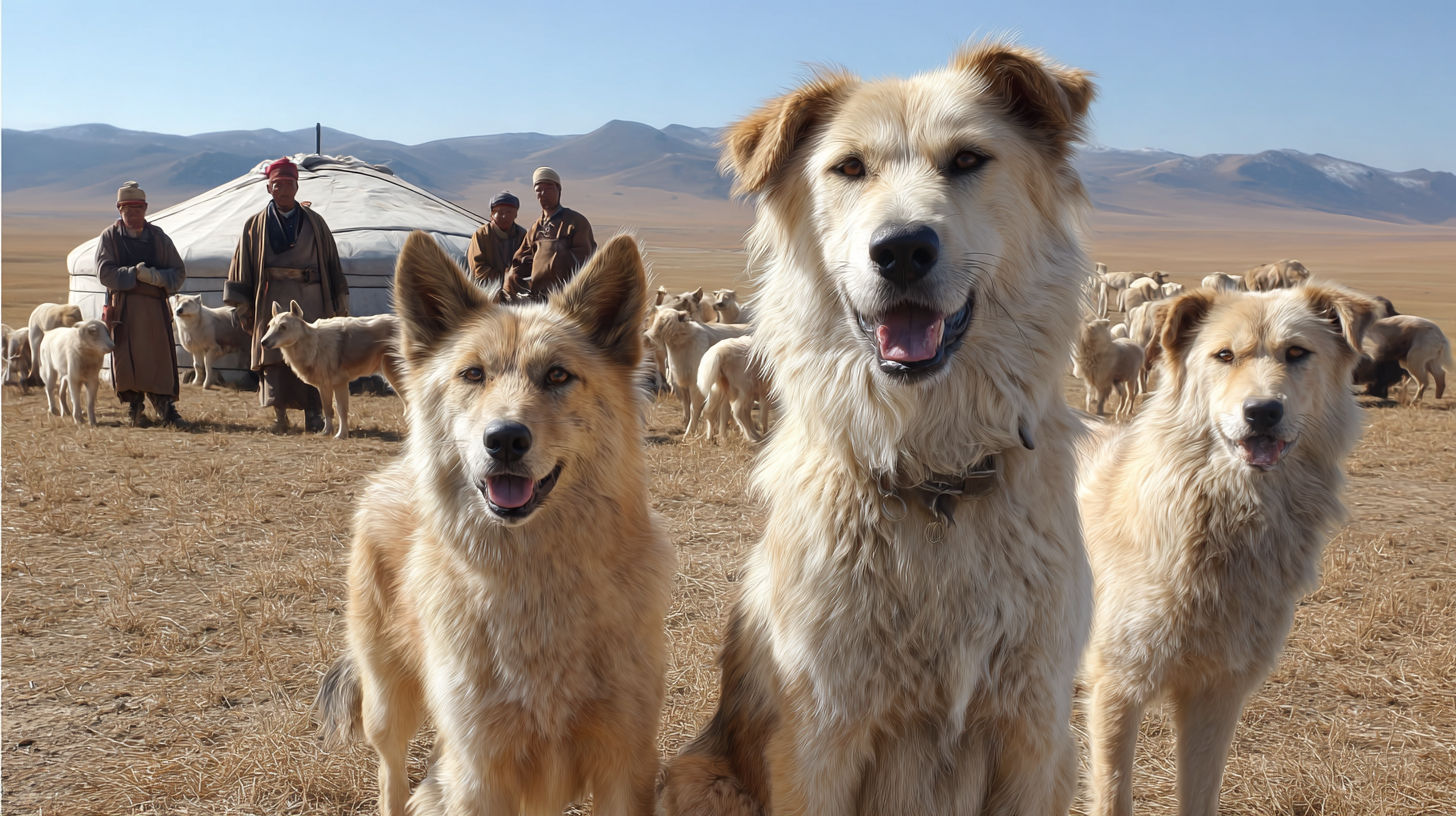Mongolian Bangkar Dogs: The Loyal Companions of Nomadic Families
Have you ever wondered about the incredible dogs that have accompanied Mongolian nomads for thousands of years? The Mongolian bangkar dog breed is a remarkable example of a traditional Mongolian dog breed that has adapted perfectly to the nomadic lifestyle of Mongolia. These dogs are not just pets; they are vital members of nomadic families helping with herding, guarding livestock, and providing protection. In this post, i will explore the fascinating history, characteristics, and role of Mongolian bangkar dogs and why they are considered a symbol of Mongolian culture, especially among nomadic families. Whether you’re a dog enthusiast or interested in traditional Mongolian culture, this guide will give you valuable insights into this unique and rare breed.
The Origins and History of Mongolian Bangkar Dogs
Dogs have been domesticated in Asia for around 30,000 to 40,000 years, with Mongolia being one of the earliest regions to domesticate dogs. The nomadic lifestyle that emerged in Mongolia around 2000 BC influenced the development of specialized breeds to suit the harsh environment. The bangkar dog breed is believed to have evolved from traditional Mongolian herding and pastoral dogs known for their resilience, agility, and loyalty. These dogs played a crucial role in nomadic life, assisting families with livestock guarding and hunting, which were essential for survival in Mongolia’s vast steppes. The mongolian bangkar is characterized by its robust build, adaptability, and fierce guarding instincts. Today, the population of bangkar dogs is estimated to be between 10,000 and 20,000, making them a rare and valuable asset for nomadic communities.
Key Characteristics and Traits of Mongolian Bangkar Dogs
The mongolian bangkar dog breed weighs between 20 to 50 kg (44-110 lbs) and measures 30 to 55 cm (12-22 inches) in height. They have a thick, dense coat suited for extreme weather conditions, and their alert eyes reflect their vigilance. These dogs are known for their independence, intelligence, and unwavering loyalty to their family of nomads. Originally bred for hunting and guarding, bangkar dogs are excellent watchdogs and can fiercely protect their family and livestock from predators. They are also agile and fast, making them perfect herding dogs for nomadic families moving across Mongolia’s expansive terrain. Their lifespan ranges from 10 to 15 years, during which they remain strong and loyal companions. Their protective instinct makes them ideal family dogs for nomadic families seeking both safety and companionship.
The Role of Mongolian Bangkar Dogs in Nomadic Culture
Mongolian culture has long celebrated the deep bond between nomadic families and their dogs. The bangkar breed exemplifies this relationship as a traditional mongolian dog breed that embodies loyalty, resilience, and adaptability. Nomadic families rely heavily on these dogs for herding livestock, guarding property, and providing companionship in the vast Mongolian steppe. The breed’s characteristics perfectly align with the needs of a nomadic lifestyle, allowing families to travel long distances while keeping their animals and property protected. These dogs are more than working animals; they are part of the family and an essential element of their nomadic way of life. Their enduring presence signifies the harmony between Mongolian culture and nature, showcasing how traditional mongolian dogs continue to play a vital role today.
Herding and Guarding: The Skills of Mongolian Mongolian Herding Dogs
The mongolian bangkar dog breed is renowned for herding livestock and guarding nomadic families’ property. Their herding skills include controlling movement and protecting against predators such as wolves and foxes. They are also excellent livestock guard dogs, utilizing their loud bark and fierce attitude to deter threats. This breed’s natural instinct to herd and guard makes them indispensable for nomadic lifestyles where relocation is frequent. Their robust physical structure ensures they can withstand Mongolia’s extreme cold and rugged terrain while performing their duties. Their versatility as both herding and guarding dogs continues to support the livelihood of uranian families and reinforces their integral role in traditional Mongolian pastorship.

Conclusion: Embracing the Legacy of Mongolian Bangkar Dogs
The mongolian bangkar dog breed is a living testament to Mongolia’s rich nomadic history and cultural heritage. They are not just working dogs but also loyal guardians and family members who thrive in the harsh environment by their resilience and adaptability. For nomadic families, these dogs represent safety, loyalty, and the spirit of survival in the Mongolian steppes. If you’re fascinated by traditional mongolian dogs or are considering adopting a breed that embodies strength and loyalty, the bangkar dog is an excellent choice. Embracing this breed means preserving a piece of Mongolian cultural identity and supporting the nomadic way of life that has thrived for thousands of years.
If you found this insight intriguing, feel free to comment below, share this article with fellow dog lovers, or subscribe for more stories about unique dog breeds and nomadic cultures. 🐕🌏